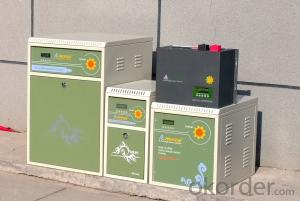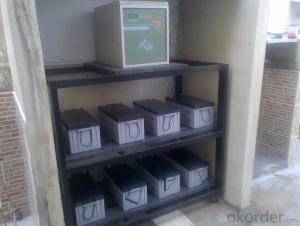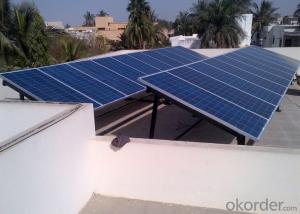Off Grid Sun Power System Meet 150W Solar Panel
- Loading Port:
- Tianjin
- Payment Terms:
- TT OR LC
- Min Order Qty:
- 10 unit
- Supply Capability:
- 10000 unit/month
OKorder Service Pledge
OKorder Financial Service
You Might Also Like
Item specifice
AC solar power system consists of solar batteries, solar controller, battery, inverter components.
Used to solve rural or remote areas without electricity, such as highland, island, pastoral, villas, border posts and other military and civilian life electricity.
Daily use reference
TV 70W x 4 hours
Lighting 30W x 6 hours
Fan 50W x 6 hours
Laptop 60W x 2 hours
Total loading power: 210W
Total power consumption per day: 880Wh (0.88kWh/day)
Warranty
provides a 1~3 year limited warranty (“Warranty”) against defects in materials and workmanship for its Uninterruptible power supply, Power inverter/chargers, Solar charge controllers, Battery Products (“Product”).
The term of this Warranty begins on the Product(s) initial purchase date, or the date of receipt of the Product(s) by the end user, whichever is later. This must be indicated on the invoice, bill of sale, and/or warranty registration card submitted to us. This Warranty applies to the original MUST-Solar Product purchaser, and is transferable only if the Product remains installed in the original use location.

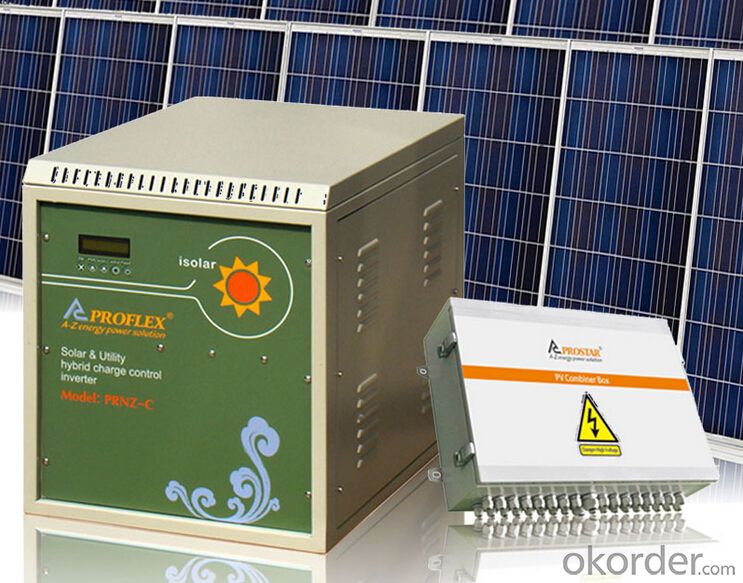
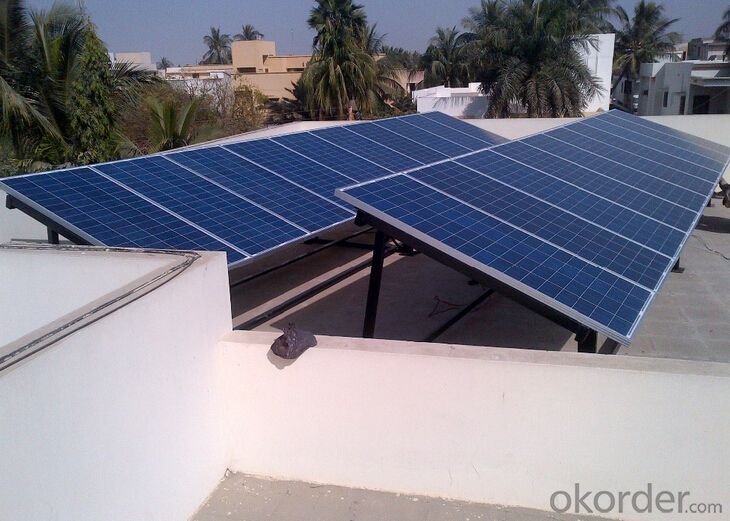
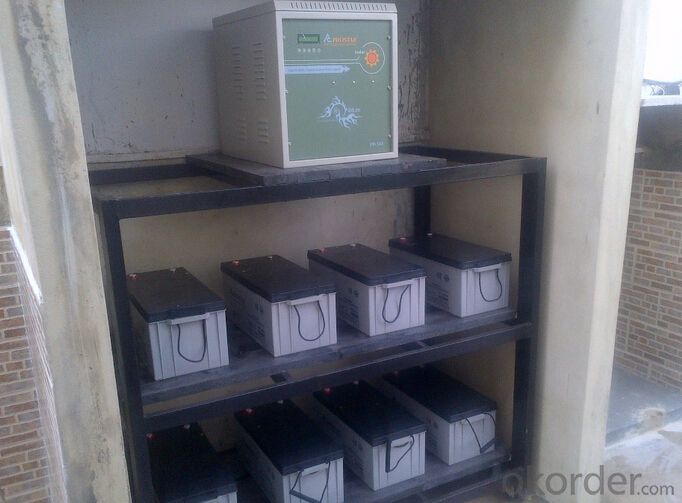
off grid sun power system
| Design Backup Time 5-6Hrs | |||
| Solar Module | Maximum power at STC(pm) | 150W solar panel(polycrystalline) 2pcs 75W,2pcs parallel | |
| Max.system charging voltage | 17.6V | ||
| Max.system charging current | 8.54A | ||
| Inverter | Output waveform | High frequency pure sine wave | |
| Continuous output power | 300W | ||
| Output voltage/frequency | 220V/50HZ | ||
| Charge controller | Syetem voltage | 12V | |
| Rated discharge current | 15A | ||
| Cabinet | Material | Steel box of zinc-plated and laquer-coated | |
| Battery | Type | Deep cycle | |
| System voltage | 12V | ||
| capacity | 1pcs 12V 100Ah | ||
| operating temperature | -20℃-+55℃ | ||
| Packing(CBM/KG) | Solar panel | 0.06CBM/20KGS | |
| Control box | 0.11CBM/21KGS | ||
| Battery | 0.02CBM/22KGS | ||
| Whole system | 0.19CBM/23KGS | ||
| Daily use reference | |||
| Name of load | Power | Working hours | Consumption |
| TV | 70W | 4hours | 280Wh |
| LAPTOP | 60W | 2hours | 120Wh |
| LIGHTING | 30W | 6hours | 180Wh |
| FAN | 50W | 6hours | 300Wh |
| TOTAL | 210W | 880Wh | |
FAQ
1. How do I decide which system is right for me ?
For protection from long outages, include a generator or solar panels in your Must solar system. Shorter outages can be handled by a battery-only system.
2. Where my system will be installed ?
Must solar systems are usually wall-mounted near a home's main electrical (circuit breaker) panel.
3. How do I install my system ?
A solar backup inverter is connected to a home electric system , we will supply detailed installation manual and videos for our customers .
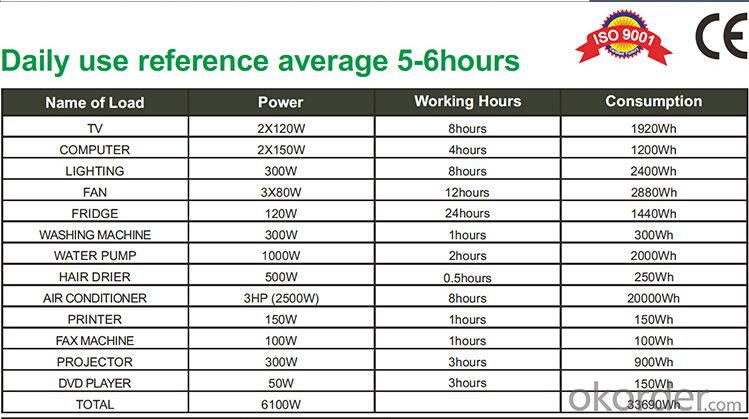

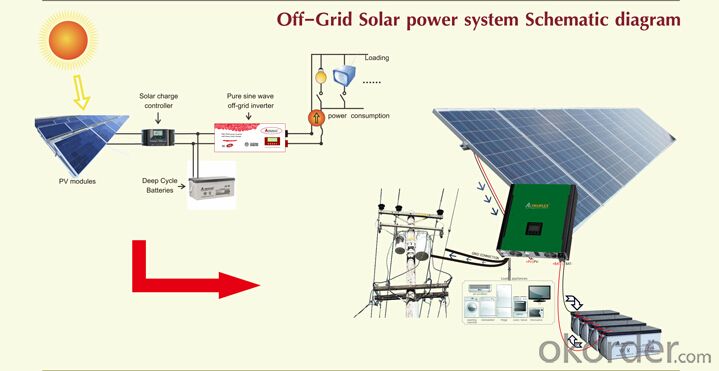

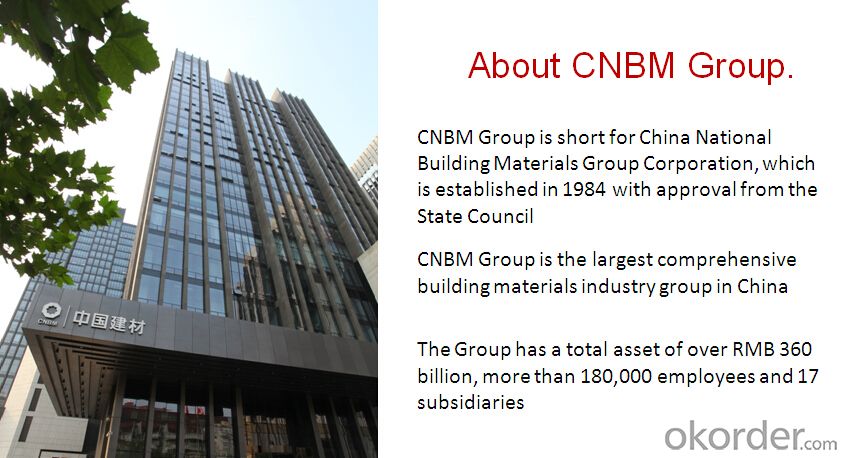

- Q:Can solar energy systems be used for space heating?
- Yes, solar energy systems can be used for space heating. Solar thermal systems can be designed to capture and convert sunlight into heat energy, which can then be used to warm indoor spaces. This can be achieved through the use of solar collectors and heat transfer mechanisms, making solar energy a viable option for space heating purposes.
- Q:Can solar energy systems be used in areas with high electrical demand?
- Yes, solar energy systems can be used in areas with high electrical demand. While the capacity of individual solar panels may be limited, the scalability of solar energy systems allows for multiple panels to be installed, creating larger photovoltaic arrays capable of generating a significant amount of electricity. Additionally, advancements in solar technology, such as the use of more efficient solar panels and energy storage solutions, have made it possible to meet the high electrical demand of such areas.
- Q:Are there any financing options available for solar energy systems?
- Yes, there are several financing options available for solar energy systems. These include solar loans, solar leases, power purchase agreements (PPAs), and government incentives such as tax credits and rebates.
- Q:Can a solar energy system be installed in areas with heavy snowfall?
- Indeed, it is possible to install a solar energy system in regions characterized by heavy snowfall. Although the efficiency of solar panels may be affected by heavy snow, their effectiveness can still be ensured through proper design and installation. The following factors should be taken into account: 1. Tilt and angle: Solar panels are typically positioned at an angle to maximize sun exposure. In snowy areas, panels can be tilted at a steeper angle, facilitating the easy sliding off of snow. 2. Snow removal: Regularly clearing snow from the panels is essential to maintain their performance. This can be done manually or by employing automated systems equipped with brushes or heating elements that melt the snow. 3. Orientation: Orienting the solar panels towards the south or the direction of maximum sunlight can help minimize the impact of heavy snowfall. This ensures that once the snow melts, the panels can promptly resume their normal operation. 4. Adequate spacing: Ensuring sufficient space between solar panels prevents the accumulation of snow on one panel from affecting the entire system. This enables continuous energy production, even if some panels are temporarily covered in snow. 5. System monitoring: The installation of a monitoring system can help identify any issues related to snow accumulation or reduced energy production. It allows for timely intervention and maintenance to guarantee optimal performance. Although heavy snowfall might cause a temporary reduction in energy production, a well-designed solar energy system can still be a feasible option in areas with such weather conditions. It is imperative to consult experienced solar installers who can devise and implement a system capable of withstanding and adapting to heavy snowfall.
- Q:What are the different incentives available for installing solar energy systems?
- There are several incentives available for installing solar energy systems, which can make this renewable energy source more financially feasible for homeowners and businesses. One of the most common incentives is the federal investment tax credit (ITC). The ITC allows individuals or businesses to deduct a percentage of the cost of installing a solar system from their federal taxes. Currently, the ITC offers a 26% tax credit for residential systems and commercial systems installed before the end of 2022. Another incentive is net metering, which allows solar system owners to receive credit for the excess electricity their system generates and feeds back into the grid. With net metering, homeowners can offset their electricity bills by using these credits during times when their solar panels do not produce enough energy, such as at night or during cloudy days. Many states also offer additional incentives, such as grants, rebates, or performance-based incentives, to further encourage the adoption of solar energy systems. These incentives vary by state but can significantly reduce the upfront costs of installing solar panels. Some utility companies also provide incentives through solar renewable energy certificates (SRECs). SRECs are tradable credits that represent the environmental attributes of a certain amount of electricity generated from solar energy. By generating solar electricity, homeowners or businesses can earn these SRECs and sell them to utilities, providing an additional source of income. Lastly, some local governments offer property tax exemptions or deductions for installing solar energy systems. This means that the added value of the solar system to a property is not subject to increased property taxes, making solar installations financially more attractive. All of these incentives help offset the initial investment and ongoing costs of solar energy systems, making them a more viable and affordable option for those interested in adopting renewable energy and reducing their carbon footprint.
- Q:Can solar energy systems be used for powering telecommunications infrastructure?
- Yes, solar energy systems can be used to power telecommunications infrastructure. Solar panels can be installed on rooftops or in open spaces to harness sunlight and convert it into electricity. This renewable energy can then be used to power communication towers, equipment, and other telecommunications infrastructure, providing a sustainable and reliable energy source. Additionally, solar energy systems can be combined with battery storage solutions to ensure uninterrupted power supply even during periods of low sunlight or at night.
- Q:How much space do I need for a solar energy system?
- The space required for a solar energy system depends on various factors such as the size of the system, the amount of energy needed, and the efficiency of the solar panels. In general, for a residential solar energy system, you would need a roof space of about 100-400 square feet per kilowatt (kW) of solar panels. However, there are alternative options like ground-mounted systems or solar canopies that can be used if roof space is limited. It is recommended to consult with a solar energy professional who can assess your specific energy needs and available space to determine the appropriate size and configuration of the system.
- Q:Can solar energy systems be used for powering off-grid eco-villages?
- Yes, solar energy systems can certainly be used to power off-grid eco-villages. Solar panels can generate electricity from the sun's energy, which can then be stored in batteries for later use. This renewable and clean source of energy is ideal for eco-villages that prioritize sustainability and reducing their carbon footprint. With advancements in technology, solar energy systems have become more efficient and affordable, making them a viable option for powering off-grid communities.
- Q:Can solar energy systems be easily expanded or upgraded?
- Yes, solar energy systems can be easily expanded or upgraded. The modular nature of solar panels allows for additional panels to be added to the system, increasing its capacity. Similarly, if more energy is required, additional batteries can be installed to store excess energy. Furthermore, advancements in technology and increasing efficiency of solar panels make it possible to upgrade existing systems with new and more efficient components, improving overall performance.
- Q:What are the devices needed for PV systems?
- Inverter. The utility model is a device for converting the direct current of the solar cell square and the storage battery to the alternating current, which is the key component of the photovoltaic grid connected power generation system. Since the solar cells and batteries are DC power supply, when the load is AC load, the inverter is essential. The inverter can be divided into independent operation inverter and grid connected inverter. The independent operation of the inverter is used for the independent operation of the solar cell power generation system, for independent load power supply. Grid connected inverter for grid connected solar power generation system, this paper introduces the photovoltaic grid connected generation system [1]. As shown in Figure 1, the grid connected inverter by IGBT power switching devices, control circuit of the switching element is regular continuous open or off, so that the output voltage polarity alternating, DC input into AC output. The inverter can be divided into square wave inverter and sine wave inverter according to the output wave type. The square wave inverter has the advantages of simple circuit, low cost, large harmonic component, and the utility model can be used for a system with a few hundred watts and a low harmonic requirement. Sine wave inverter is expensive, but can be applied to various loads.
1. Manufacturer Overview |
|
|---|---|
| Location | |
| Year Established | |
| Annual Output Value | |
| Main Markets | |
| Company Certifications | |
2. Manufacturer Certificates |
|
|---|---|
| a) Certification Name | |
| Range | |
| Reference | |
| Validity Period | |
3. Manufacturer Capability |
|
|---|---|
| a)Trade Capacity | |
| Nearest Port | |
| Export Percentage | |
| No.of Employees in Trade Department | |
| Language Spoken: | |
| b)Factory Information | |
| Factory Size: | |
| No. of Production Lines | |
| Contract Manufacturing | |
| Product Price Range | |
Send your message to us
Off Grid Sun Power System Meet 150W Solar Panel
- Loading Port:
- Tianjin
- Payment Terms:
- TT OR LC
- Min Order Qty:
- 10 unit
- Supply Capability:
- 10000 unit/month
OKorder Service Pledge
OKorder Financial Service
Similar products
New products
Hot products
Related keywords
